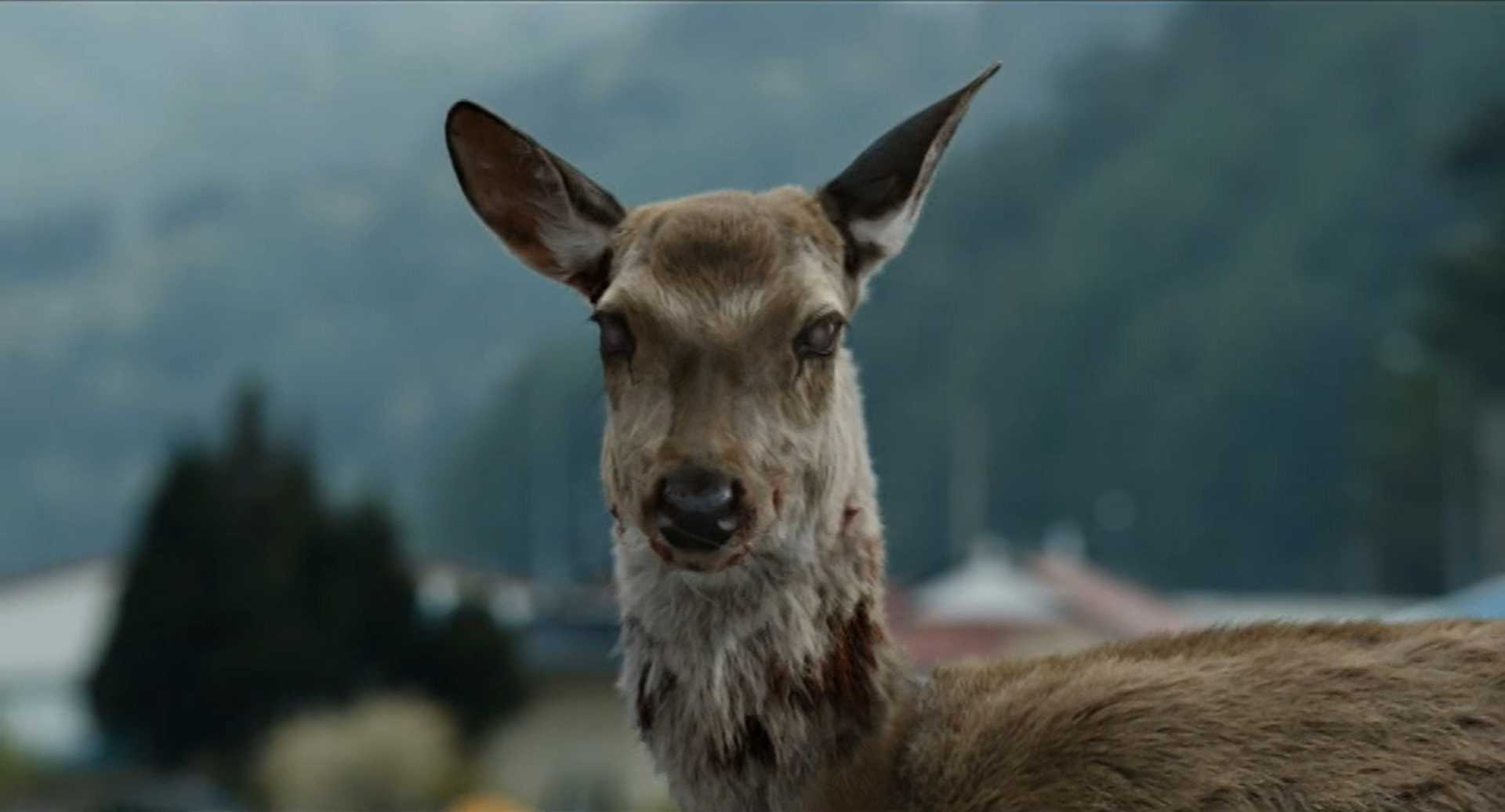Content warning: This article contains images of real animal death.
The opening of Yeon Sang-ho’s action-horror film Train to Busan (2016) interprets the circumstances that lead to the epidemic at the centre of the ‘zombie apocalypse’ genre through an incident with a farmer and a deer. Considering the film’s narrative is characterised by a linearity of urban location, owing to its narrative framework as a form of ‘road movie’, the decision to isolate Train to Busan’s beginning to Jinyang, lush and green, is significant in facilitating the initial encounter with the undead contagen. The scene utilises the sense of coincidence, unexpected but unspectacular, of a deer being killed by a car whilst driving through nature. The mundanity it seeks to communicate, all for the sake of overturning it, is that the struck deer functions as a ‘bump in the road.’ A collection of common associations with wild deers – as undomesticated, as homogenised, as ubiquitous – produces an apathetic response from the farmer who accidentally strikes it with his vehicle. The farmer’s failure to observe the deer, paired with the prolonged shot of the deer’s bloodied face and clouded eyes that only the audience bears witness to, scrutinises the value of roadkill in contrast to livestock whilst demonstrating a human-animal context that enables the outbreak of zoonotic disease.
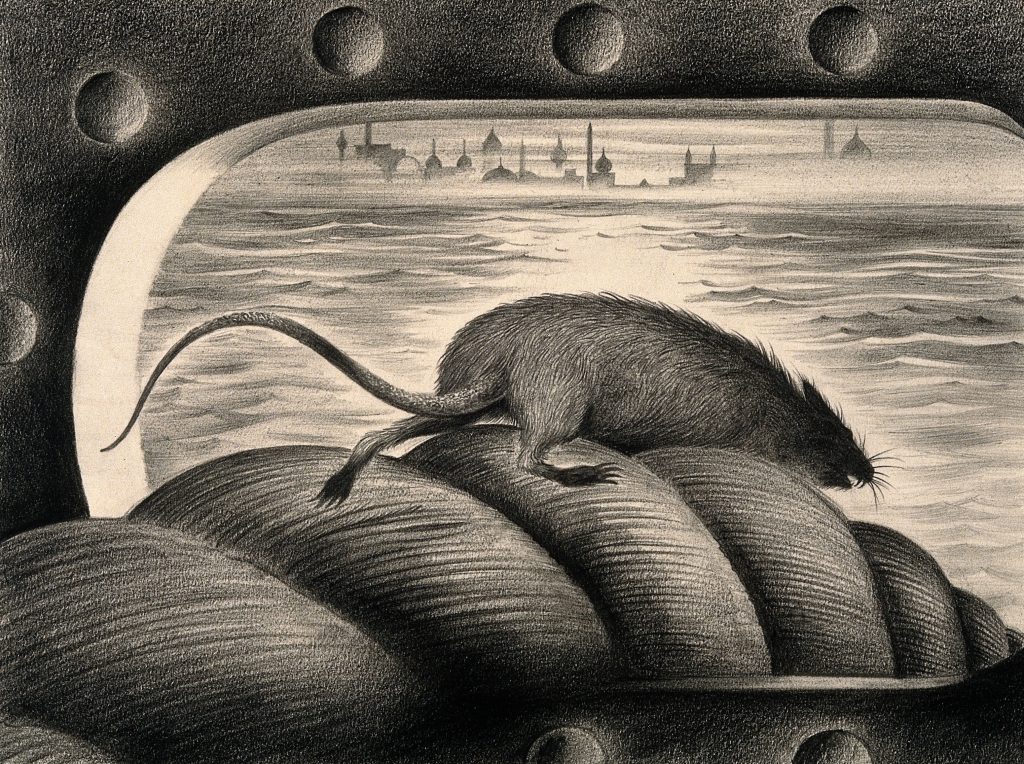
Figure 1: A drawing by Albert Lloyd Tarter depicting a rat leaving a ship via its mooring rope. 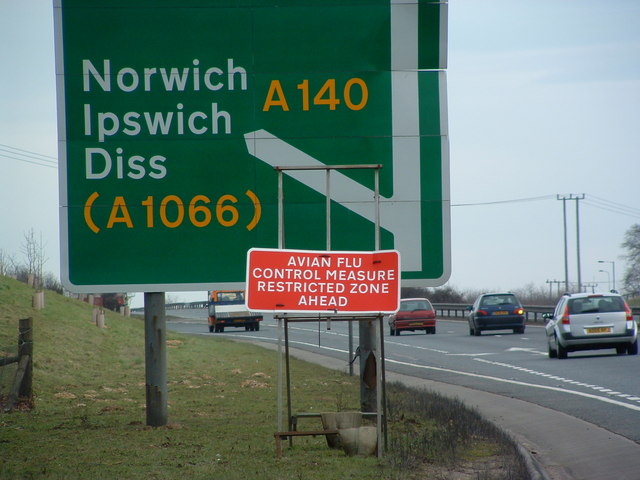
Figure 2: A sign on a motorway warning drivers about a restricted zone in response to an avian flu outbreak.
Zoonotic transmission of disease is a well-documented phenomena within international histories that lead to the image of the animal becoming representative of the onset of plague, justified or not, such as the black rat to the 1347 – 1352 Black Death [1]. Later, the emergence of an awareness surrounding avian flu within the cultural consciousness exposes, as Natalie Porter describes, ‘the fact that human health cannot be addressed in isolation from the livestock economies in which bird flu viruses are embedded’ [2]. In its introduction, Train to Busan takes this notion further, escalating the consequences of devaluing the wild deer, an animal living outside of livestock economies, when considering it a by-product of vehicular travel in nature. The arbitrariness of the deer’s death is brought into focus by the farmer’s aborted walk, presented in a long shot, trained on the road ahead, panning down to reveal the body of the deer. He prioritises checking the condition of his truck, stooping to assess his wheel, demonstrating more attentiveness towards his vehicle than the body of the deer. Dead or alive, it is left to lay in the road. Having previously demonstrated anger towards the envisioned destruction of his livestock, the farmer’s neglect to check the deer’s condition concerns itself with proprietorial discourses surrounding the undomesticated animal.
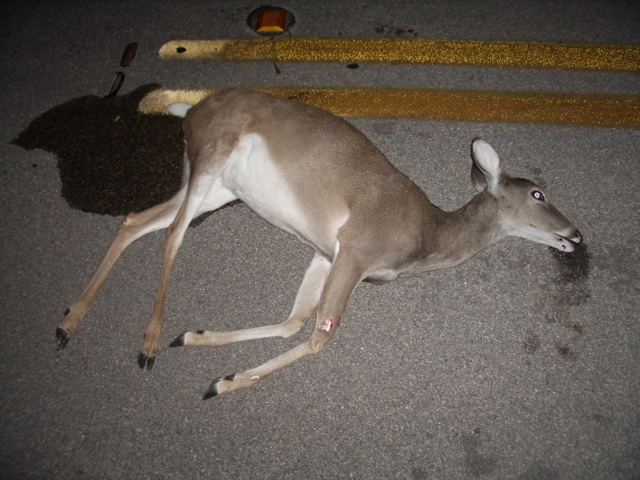
Figure 3: A white-tailed deer hit by automobile in the Texas Hill Country. 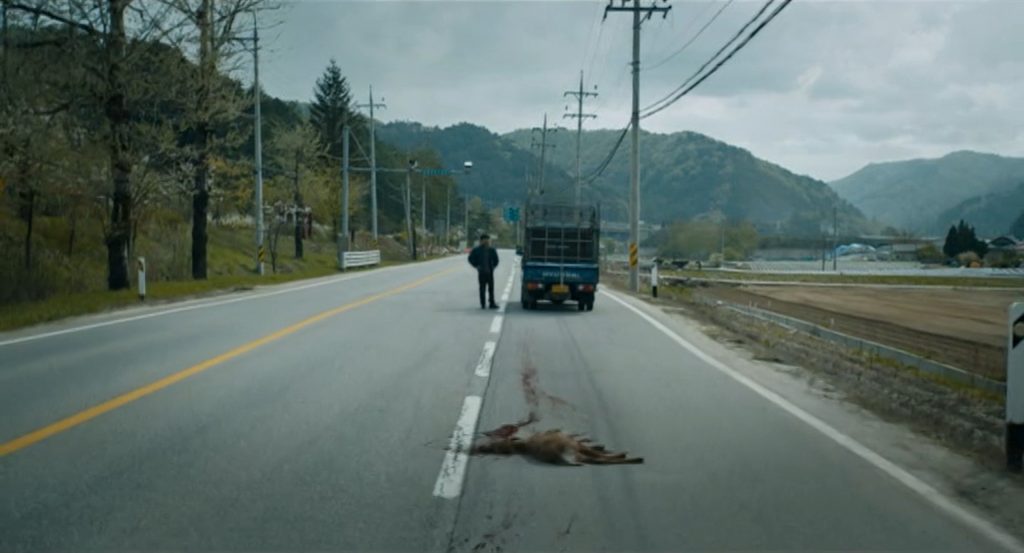
Figure 4: Train to Busan’s deer after its collision with the farmer’s vehicle. 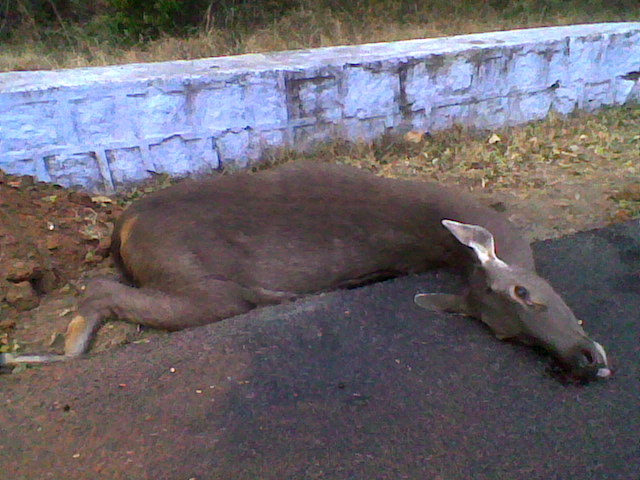
Figure 5: A sambar deer roadkill along road in Anamalai Tiger Reserve, India.
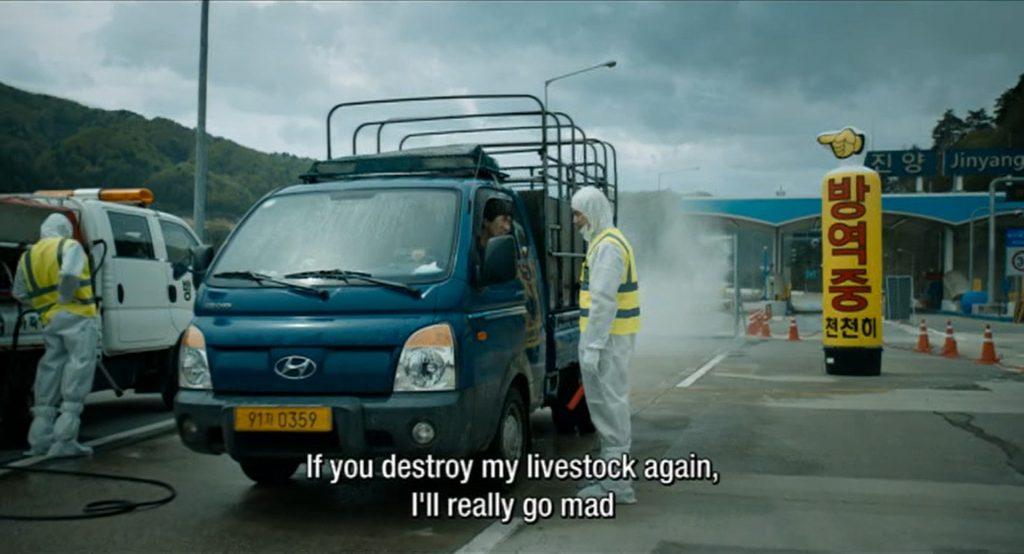
The farmer’s suspicion of the explanation he receives and subsequent threat of anger exhibits an awareness of disease as a destroyer of both life and productivity – levelling criticism at corporatised biotechnology, a theme at the film’s core – in that the lives of his livestock constitute his own productive life. Aware of the destruction an outbreak causes amongst his livestock, the farmer’s suspicion of the sanitation’s justification further contributes to the film’s broader criticisms of biopolitical capitalism and its championing of collectivist attitudes. Because the deer does not maintain any value in this paradigm its death on the road presents itself as a delay in his journey rather than a personal, material loss for him. The scene’s indictment of this decision positions Train to Busan as an intervention in the dialectics of zoonotic disease and the creation of epidemics.
As such, the scene capitalises on the normalised image of the wild deer as rural roadkill, utilising a wide shot to demonstrate the farmer’s exit from the scene, panning again – a technique that reoccurs in response to the farmer’s inattentive observation of the deer, fulfilling the scrutiny he did not pay – to centre on the deer’s body. A droning note mounts alongside the diegetic scrabble of hooves on concrete, heralding the unkillable roadkill’s convulsive reanimation. The sense of foreboding the music generates grows when the deer’s face is finally cut to, revealing an uninhibited display of undeath. Any sense of the mutuality of gazing is made unattainable because of the milkiness of its stare, a key signifier of ‘zombification’, trained on the audience. This functions both as a retributive gesture for the disregard shown to roadkill and an omen of the human epidemic, the ‘zombie apocalypse’, to follow.
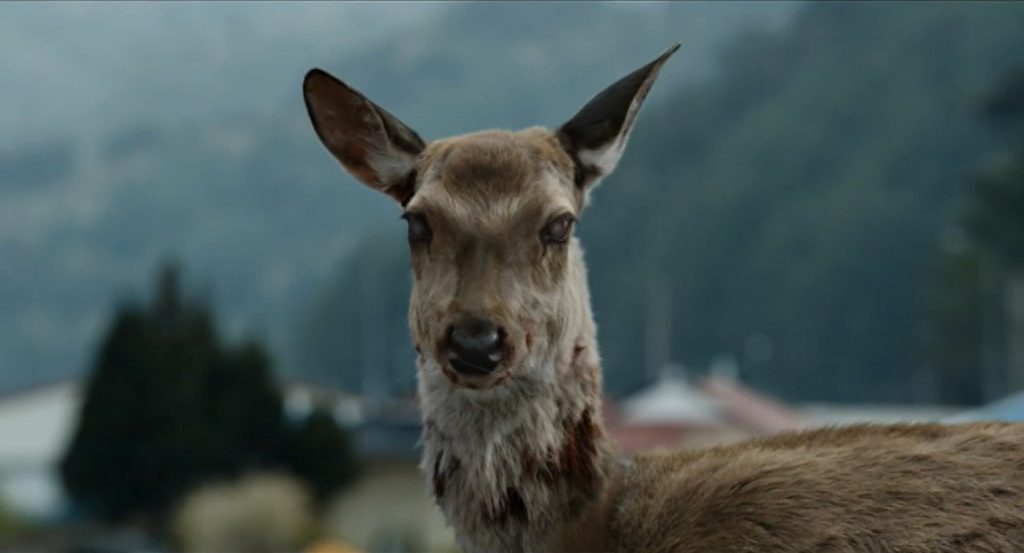
BIBLIOGRAPHY
[1] Davis E., David, ‘The Scarcity of Rats and the Black Death: An Ecological History’, The Journal of Interdisciplinary History, 16.3 (1986), 455 – 470 <https://doi.org/10.2307/204499>
[2] Porter, Natalie., Viral Economies : Bird Flu Experiments in Vietnam (Chicago: University of Chicago Press, 2019)
Sang-ho, Yeon, dir., Train to Busan (Next Entertainment World, 2016)
Figure 1: London, Wellcome Library, A rat leaving a ship via the mooring rope, thus spreading th, digital photograph, Wikimedia Commons, 28th October 2014 <https://upload.wikimedia.org/wikipedia/commons/f/f3/A_rat_leaving_a_ship_via_the_mooring_rope%2C_thus_spreading_th_Wellcome_V0010685.jpg> [Accessed 16th January 2023]
Figure 2: Evans, Keith, Avian Influenza ( Bird Flu ) Sign – geograph.org.uk – 339917.jpg, digital photograph, Wikimedia Commons, 16th February 2007 <https://upload.wikimedia.org/wikipedia/commons/4/4f/Avian_Influenza_%28_Bird_Flu_%29_Sign_-geograph.org.uk-_339917.jpg> [Accessed 16th January 2023]
Figure 3: Sullivan, Reid, Roadkill cerf, digital photograph, Wikimedia Commons, 19th January 2006 <https://commons.wikimedia.org/wiki/File:Roadkill_cerf.jpeg> [accessed 10th November 2022]
Figure 5: Raman, Shankar, R., T., Sambar roadkill Image035, digital photograph, Wikimedia Commons, April 12th 2012 <https://commons.wikimedia.org/wiki/File:Sambar_roadkill_Image035.jpg> [accessed 10th November 2022]
